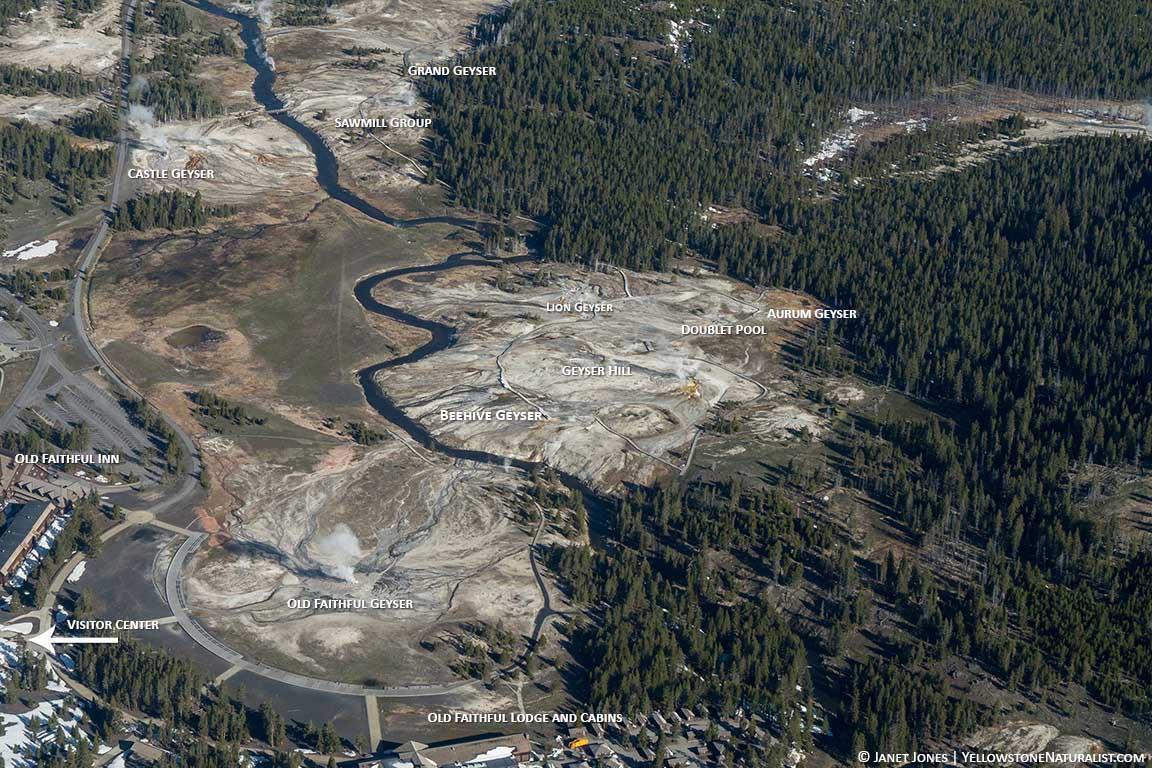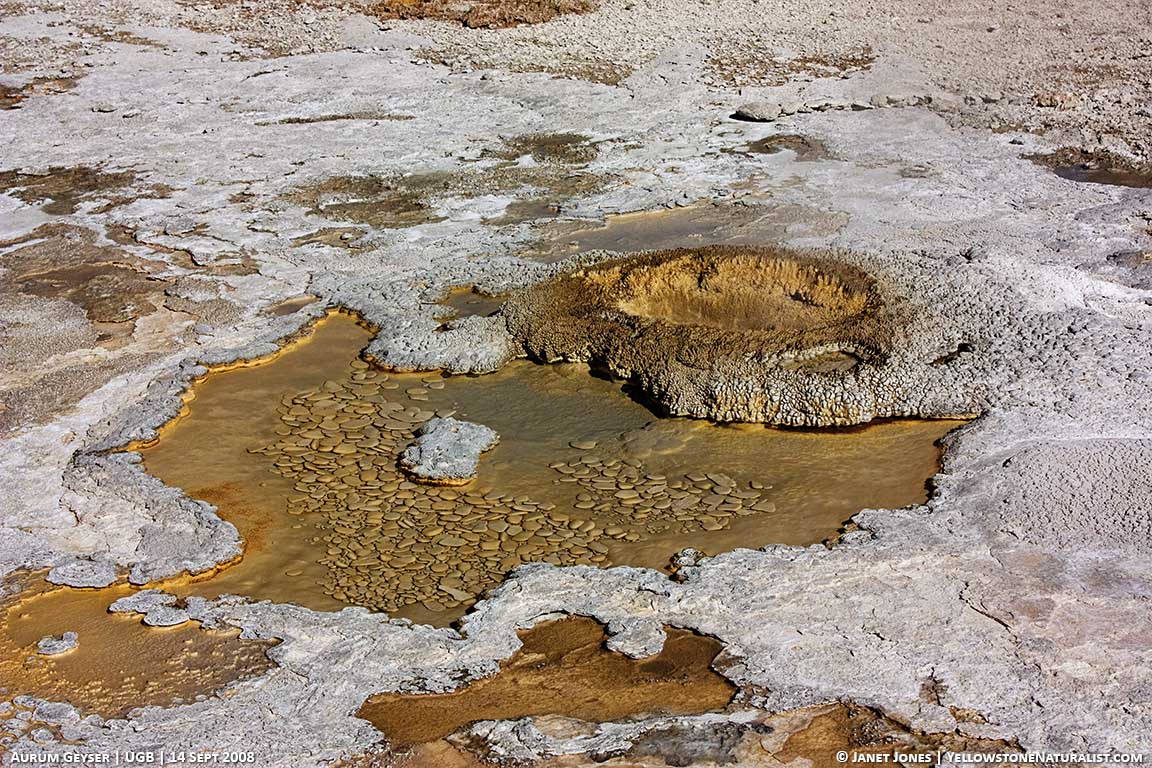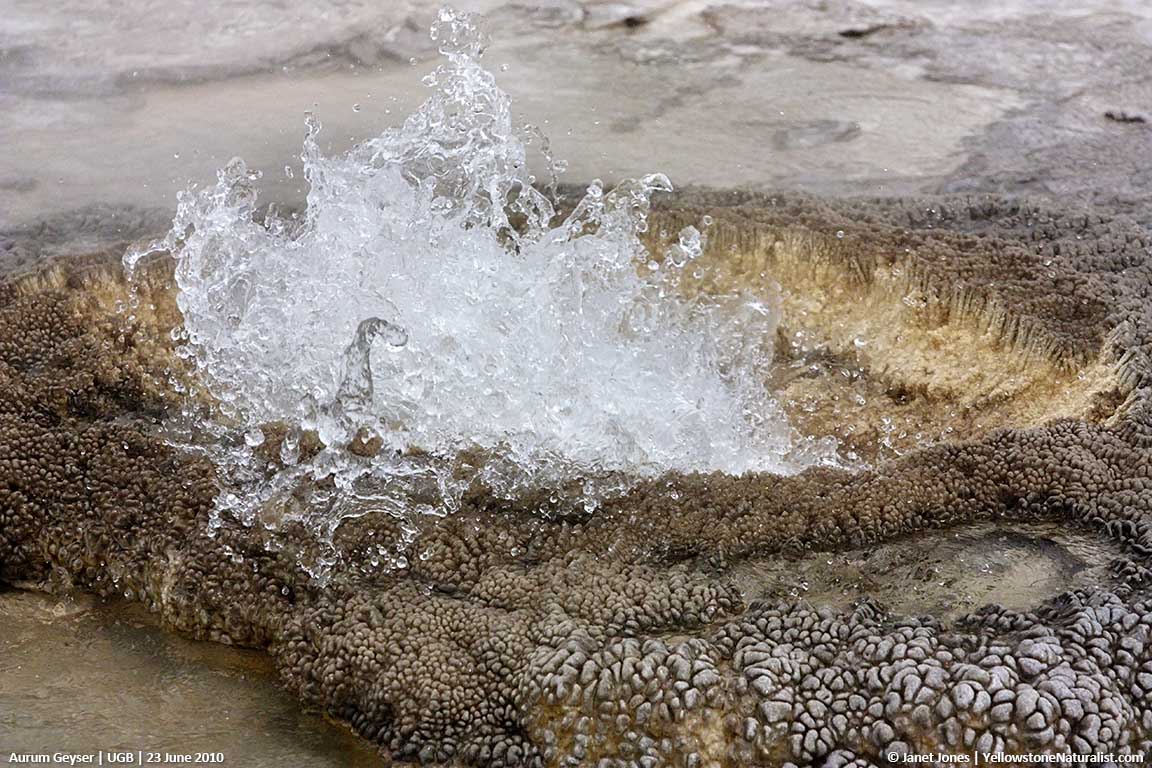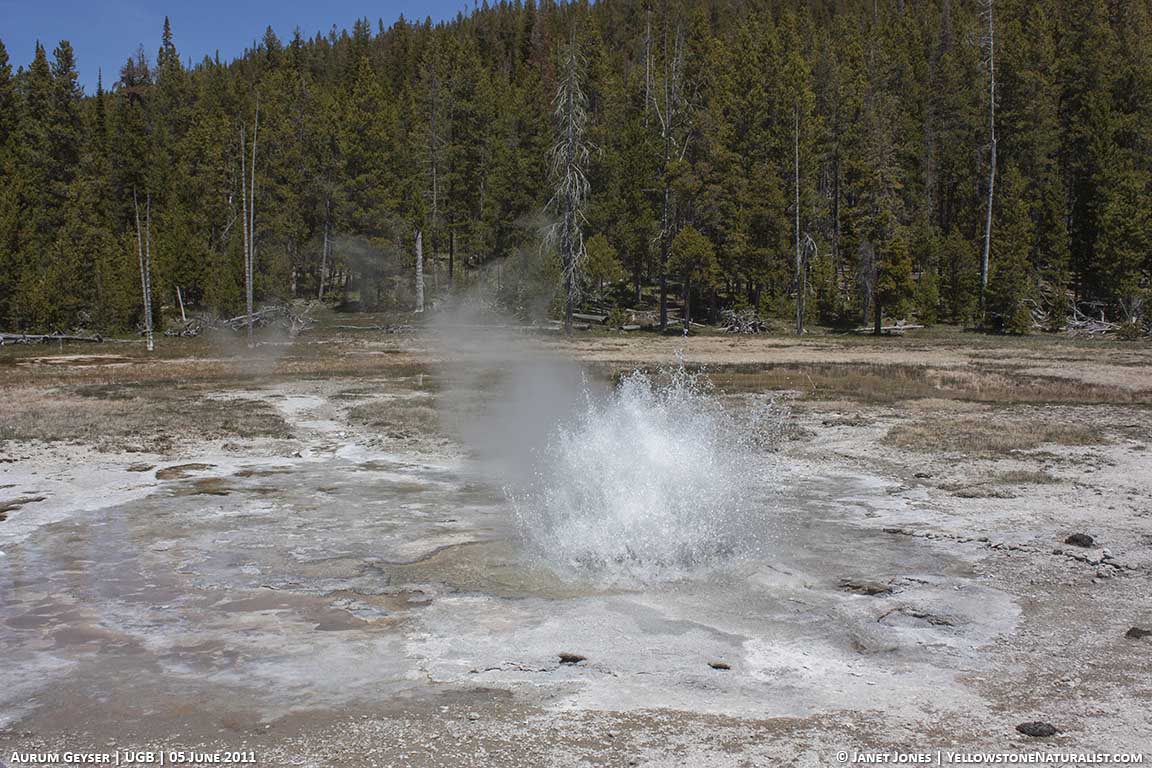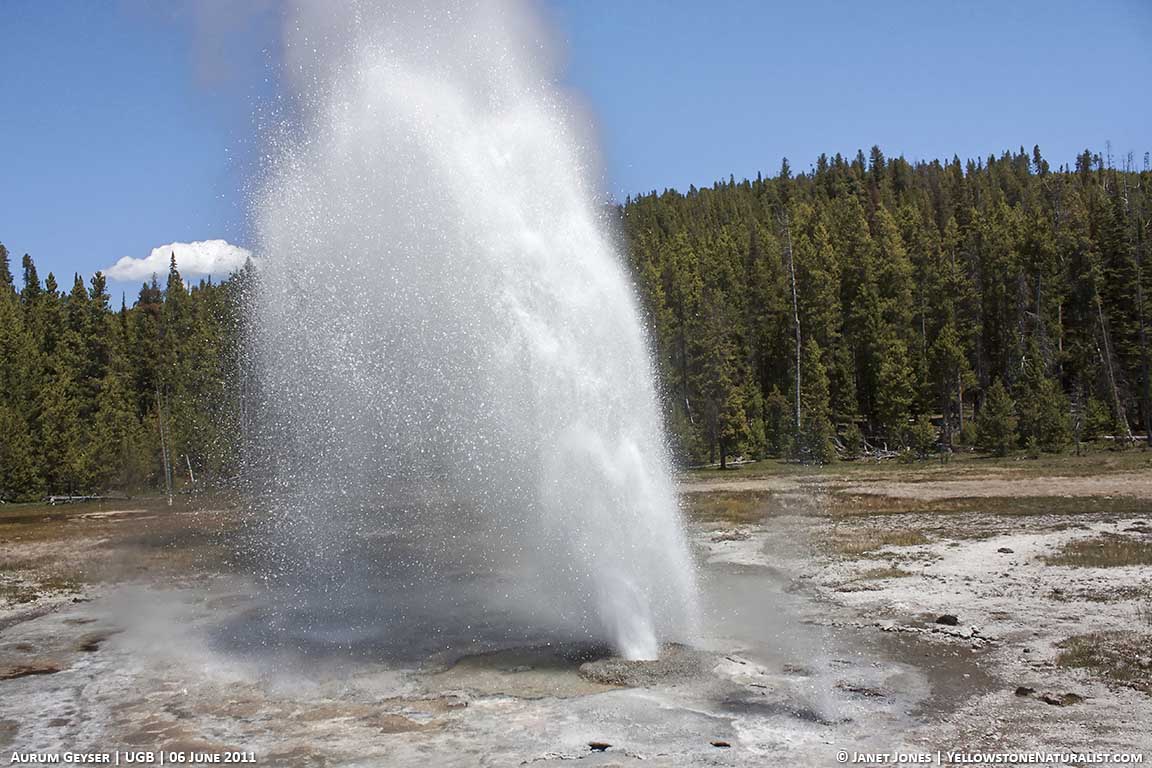Get to know Aurum Geyser
This post takes a closer look at Aurum Geyser, one that’s a favorite of many that can take a bit of determination, dedication and a healthy dose of patience to witness up close.
WHERE IT’S LOCATED
Aurum Geyser is located on the upper side of Geyser Hill, a short walk away from Old Faithful Geyser. To reach Aurum, walk around toward the “back” side of Old Faithful until you reach the trail that leads you down to the river. When you arrive on Geyser Hill, take the path to the right that goes uphill. Aurum Geyser is located on the far side of the hill, not far from Doublet Geyser.
ABOUT AURUM GEYSER
On the periodic table, you’ll find Gold listed as Au or Aurum. This is the Latin word for gold. The iron oxide that creates the golden color on the inside of the vent inspired park naturalist, George Marler to give it this name. He was unaware, though, that this geyser already had the official name of Dragon Geyser. The shape of the catch basin outside the main vent may have inspired this original name.
Aurum Geyser illustrates the ever-changing nature of geysers. Before the 1983 Borah Peak earthquake, it was known to be dormant with some days of frequent activity. It was also thought not to be connected to any other thermal features. After the earthquake, it became a regular performer.
Observers determined Aurum erupted more often (shorter intervals) in winter than summer. In the winter, eruptions could occur every 2 1/2 to 4 hours. In the summer, the time between eruptions lengthens to every 7 hours or more. However, in late 2017, there was a long pause of 11 days between reported eruptions.
During the unusual activity on Geyser Hill in mid-September 2018 when Ear Spring had a rare major eruption, Aurum Geyser erupted about every two hours. It seems now it may have longer pauses between eruptions. This summer will prove to be interesting to see whether it reverts to the commonly seen behavior seen since 1983 or if it will show us something new.
WATCHING FOR AN ERUPTION
Aurum Geyser often splashes as though it’s just about ready to erupt, but it could be hours (or days) before an eruption happens. One thing to watch is the small vents in an arch around Aurum’s vent. These fill, bubble and overflow prior to an eruption – again, at times for hours.
When Aurum does erupt, there will be a sustained splash that slowly builds into the 10 to 20-foot eruption that lasts a minute or two. Due to the short length of eruptions and the location, it’s difficult to see the eruption well unless you’re standing close by. When you do catch one, the arching eruption is particularly lovely with the sunshine turning the droplets to diamonds.
IN CONCLUSION
Aurum Geyser is a favorite of may due to the past history of dormancies and because it genuinely is a graceful geyser. Just give yourself time and patience if you’re determined to see this one up close.
